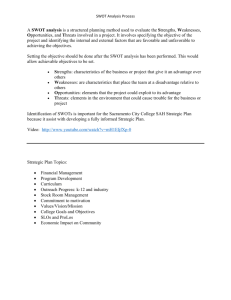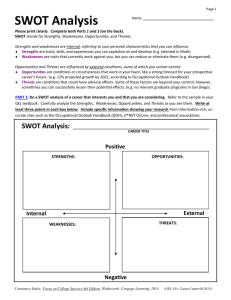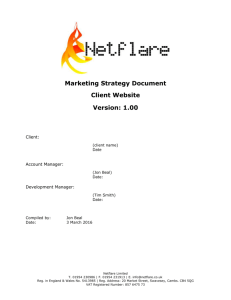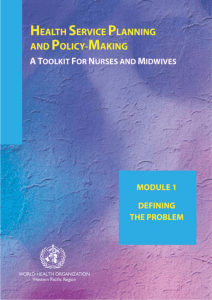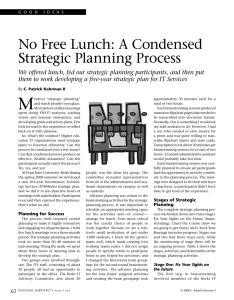Tools for Focusing Your Project Planning using Brainstorming
advertisement
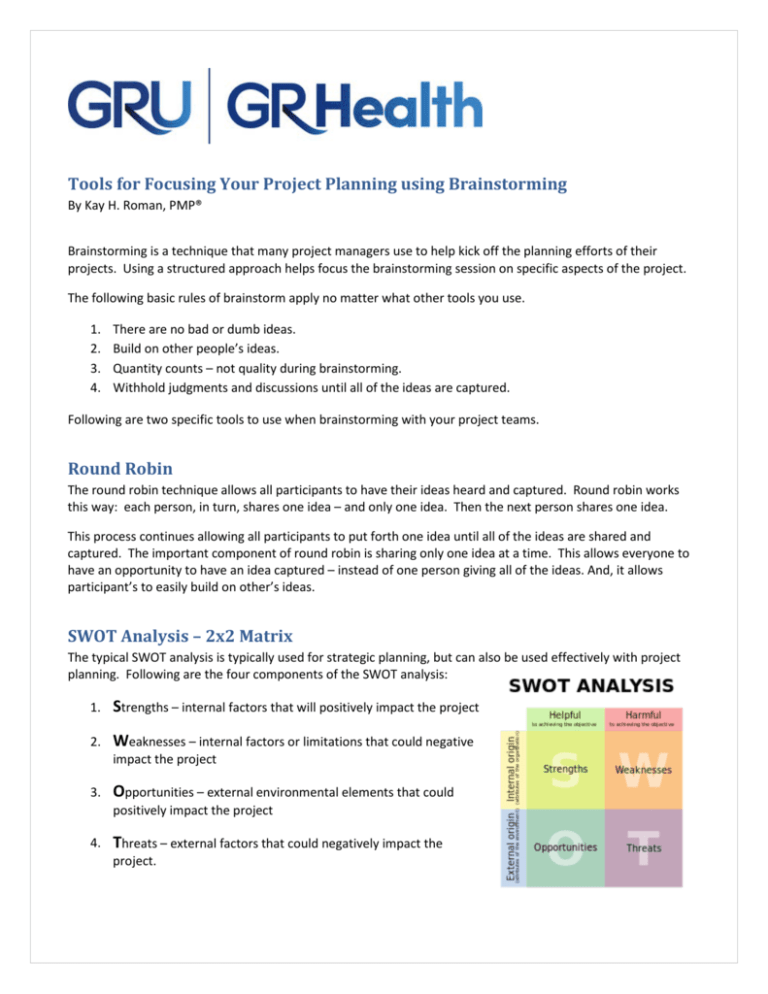
Tools for Focusing Your Project Planning using Brainstorming By Kay H. Roman, PMP® Brainstorming is a technique that many project managers use to help kick off the planning efforts of their projects. Using a structured approach helps focus the brainstorming session on specific aspects of the project. The following basic rules of brainstorm apply no matter what other tools you use. 1. 2. 3. 4. There are no bad or dumb ideas. Build on other people’s ideas. Quantity counts – not quality during brainstorming. Withhold judgments and discussions until all of the ideas are captured. Following are two specific tools to use when brainstorming with your project teams. Round Robin The round robin technique allows all participants to have their ideas heard and captured. Round robin works this way: each person, in turn, shares one idea – and only one idea. Then the next person shares one idea. This process continues allowing all participants to put forth one idea until all of the ideas are shared and captured. The important component of round robin is sharing only one idea at a time. This allows everyone to have an opportunity to have an idea captured – instead of one person giving all of the ideas. And, it allows participant’s to easily build on other’s ideas. SWOT Analysis – 2x2 Matrix The typical SWOT analysis is typically used for strategic planning, but can also be used effectively with project planning. Following are the four components of the SWOT analysis: 1. Strengths – internal factors that will positively impact the project 2. Weaknesses – internal factors or limitations that could negative impact the project 3. Opportunities – external environmental elements that could positively impact the project 4. Threats – external factors that could negatively impact the project. The SWOT analysis in the 2x2 format can serve as a planning or decision-making tool for your projects. Threats (External) Opportunities (External) Strengths (Internal) Weaknesses (Internal) Strengths & Opportunities Weaknesses & Opportunities Obvious Natural Priorities Potentially Attractive Options Likely to produce greatest ROI (Return On Investment) Likely to produce good returns if capability and implementation are viable. Likely to be quickest and easiest to implement. Potentially more exciting and stimulating and rewarding than S/O due to change, challenge, surprise tactics, and benefits from addressing and achieving improvements. Probably justifying immediate action-planning or feasibility study. Leadership question: "If we are not already looking at these areas and prioritizing them, then why not?" Leadership questions: "What's actually stopping us doing these things, provided they truly fit strategically and are realistic and substantial?" Strengths/threats Weaknesses/threats Easy To Defend And Counter Potentially High Risk Only basic awareness, planning, and implementation required to meet these challenges. Assessment of risk crucial. Where risk is low then we must ignore these issues and not be distracted by them. Investment in these issues is generally safe and Where risk is high we must assess capability necessary. gaps and plan to defend/avert in very specific controlled ways. Leadership question: "Are we properly informed and organized to deal with these issues, and are we certain there are no hidden Leadership question: "Have we accurately assessed the risks of these issues, and where surprises?" - and - "Since we are strong here, the risks are high do we have specific can any of these threats be turned into controlled reliable plans to opportunities?" avoid/avert/defend?" Source: www.businessballs.com


